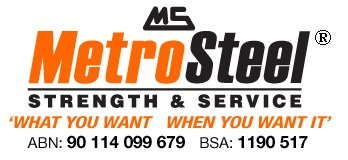Metal fabrication takes places all around the world. Depending on how it’s used, metal fabrication can be found in building supports, home appliances, and medical technology.
Fabricated metals need to meet certain criteria to function in any of the above environments. And a large part of this quality control equates to proper finishing.
In this post, we’re going to take a closer look at how metal is finished and the part powder coating plays in metal fabrication.
Metal finishing – Its importance in the fabrication process
Ask anyone who’s seen a rusty old car left abandoned on the road side and they’ll be able to tell you one thing for certain – metal gets old. After several years, dust, water, air and imperfections can ruin metal in various ways. Untreated exposed metals may be eroded by salts in the air. They can even be weakened by UV light or rain washing over them can cause rusting to occur.
Early metal fabricators realised over time that metal was missing a vital finishing procedure. By adding specific components after fabrication to the metal, it was possible to improve its durability and add many years to its overall lifespan. As they refined this process, a clear winner began to emerge.
The impact of powder coating on metal fabrication
Liquid paint was used in the early days of metal finishing, but this proved to be time-consuming, unreliable, and produced poor results. Unless the person carrying out the finish was experienced and professional, it normally wasn’t worth the investment.
In the 1960s, researchers developed and perfected the procedure of powder coating. It took the metal fabrication industry by storm, revolutionising the finishing procedure.
Powder coating provides many benefits over alternative finishing options. These include:
- Fewer surface chips
- Maintenance free products which don’t have to be repainted
- Fade, scratch, and wear-resistant surfaces
- Products which won’t corrode or rust throughout their cycle
In addition, powder coating uses less equipment to apply it, and less material. It’s also cheaper, reliable, and reduces rates of rejection.
How does powder coating work?
Powder coating is the opposite of liquid paint in that it’s applied dry. The powder is sprayed through an electrostatic gun onto the metal surface that is grounded. The electrical charge that’s given to the powder is attracted to the grounded surface of the metal. The coating is then cured under temperatures as high as 400˚F and the product is immediately ready for use once it has cooled.
Metal fabrication is a complex process and it’s important to find a company that not only understands the process but knows how to create a product that lasts. From precision to powder coating it’s the detail that makes the difference.
If you’re looking for high-end custom metal fabrication that lasts, look no further than Metro Steel. Get in touch with our experts today to find out how we can help you by calling 07 3204 1000.
 Talk to an Expert (07) 3204 1000
Talk to an Expert (07) 3204 1000 Working Hours - Mon – Fri 7:00 AM – 4:00 PM
Working Hours - Mon – Fri 7:00 AM – 4:00 PM